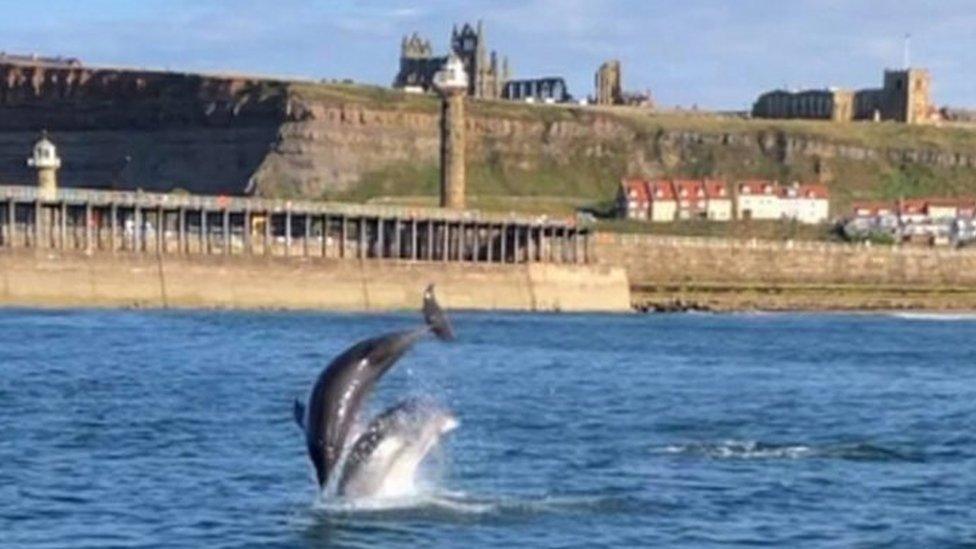'Dolphin snot' used to look at health of pod off Gower
- Published
Why is 'dolphin snot' being tested?
Blow, or snot, exhaled by dolphins off the Welsh coast has been collected as scientists try to better understand the health of pods.
The method has been used to collect DNA from humpback whales, which have the lung capacity equivalent to the size of a Ford Ka.
But with dolphins having a smaller lung volume, about the size of two rugby balls, it had never been attempted.
Swansea University researchers, though, developed a way to collect samples.
The method involves reaching a pole off a boat to collect dolphin "blow" after they have risen to the surface.
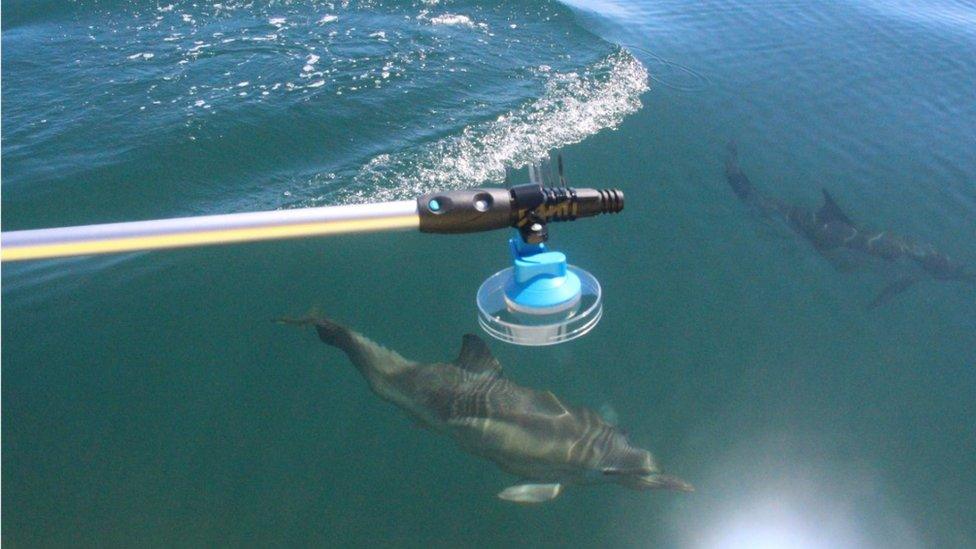
Samples were collected last week using a pole and Petri dish
It is hoped this will help scientists better understand pods of cetacean species- including common and bottlenose dolphins, and porpoises.
This will then guide efforts to protect them in the future.
"When an infected person sneezes, lung vapour (i.e. snot) can be projected quite a distance before snot hitchhikers (i.e. viruses and bacteria) take up home in another host," said Dr Chloe Robinson, who helped develop the method.
"A similar thing occurs in cetaceans.
"When they come to the surface to breathe, they exhale air at a considerable force, thus firing snot up into the air."
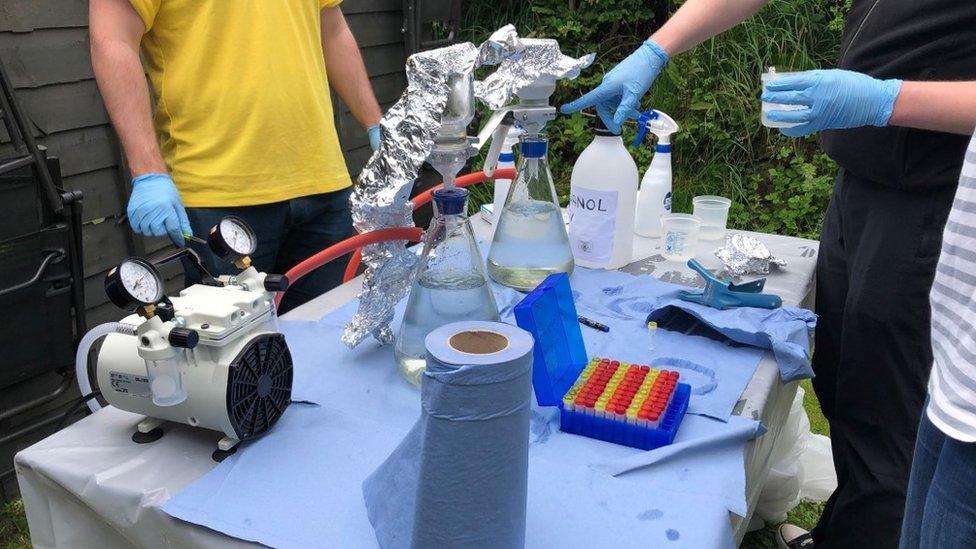
The samples collected from off Gower are being analysed
There is currently little accurate information on how many live off the Welsh coast.
However, there are estimated to be about 250 bottlenose dolphins resident in Cardigan Bay, around New Quay, all year round.
Porpoises are the most common cetacean, in large numbers off Swansea Bay, but are sometimes hard to spot because they are small and shy.
Lots of common dolphins also come close to shore in summer, off Gower, Pembrokeshire and Cardigan Bay.
Dorsal fins have previously been used to identify these, but genetic samples give more accurate information.
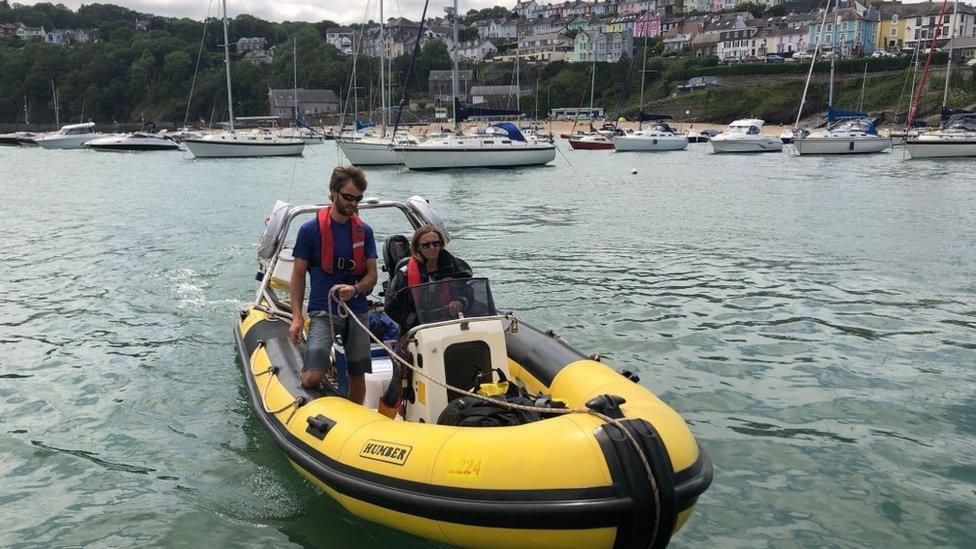
Although there are no overall population estimates for common dolphins in the eastern North Atlantic, there are thought to be about 75,000 in the Celtic Deep
However, collecting skin biopsies when dolphins rise to the surface proved invasive, leaving some shy of boats with the blubber hole left behind prone to infection.
But advancements in DNA extraction and techniques have opened up a whole ocean of opportunity.
Blowhole samples have been collected from species such as humpback whales, since 2010, using Petri dishes on poles and drones.
"The technique is already being used for larger cetaceans which can be easier if you find them as their blow or breathe is huge," said researcher Chiara Bertelli.
"But it hasn't been done in the UK or with smaller cetaceans as far as we know.
"We had one successful sample last year, so it does work although very difficult."

Work is being carried as part of Swansea University's EU-funded research project SEACAMS2 with help from New Quay-based marine charity Sea Watch
Swansea-based researchers collected 37 samples on their first attempt in 2018.
DNA was only found in one of these - from a female, short-beaked common dolphin.
But it is still believed to be the first successful collection from a small, wild cetacean species and has helped researchers to improve their methods.
Following a large number of sightings off Gower over bank holiday weekend, more samples were collected last week that are now being analysed in the laboratory.
The ultimate goal is to use the technique alongside photo identification to create a catalogue on population genetics.
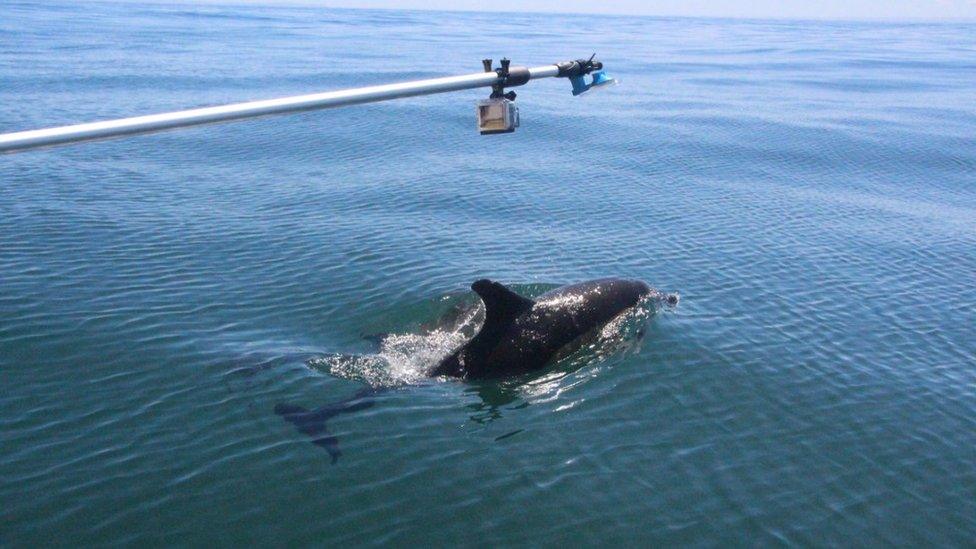
- Published7 April 2018
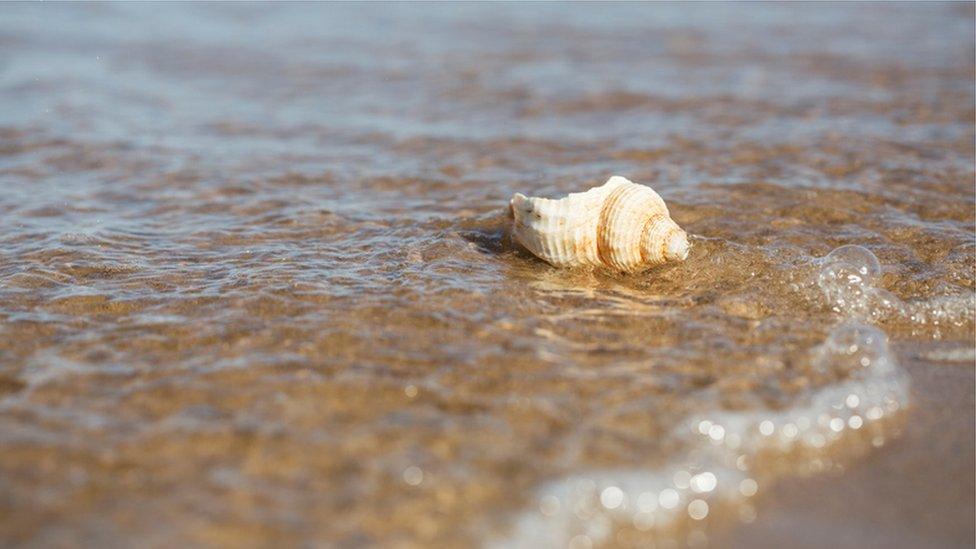
- Published23 June 2018
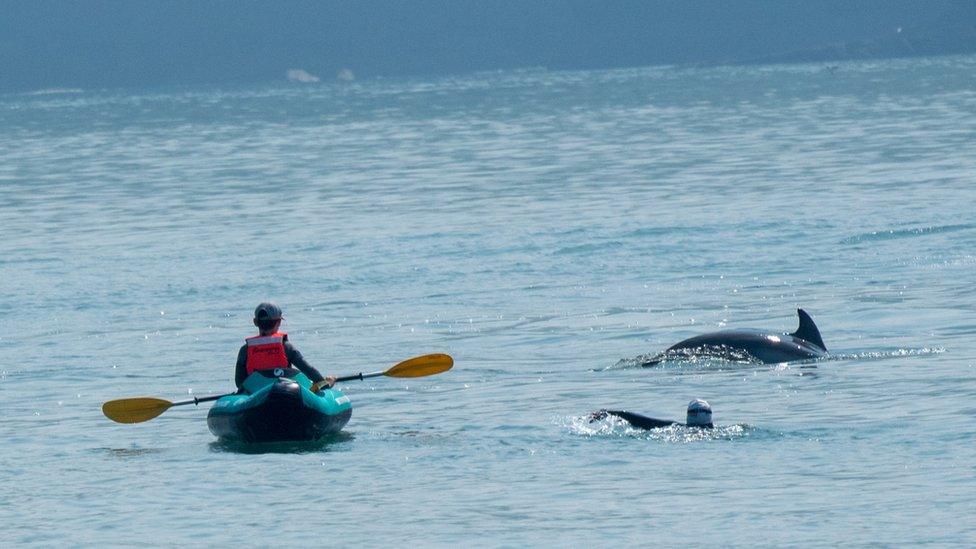
- Published18 July 2017
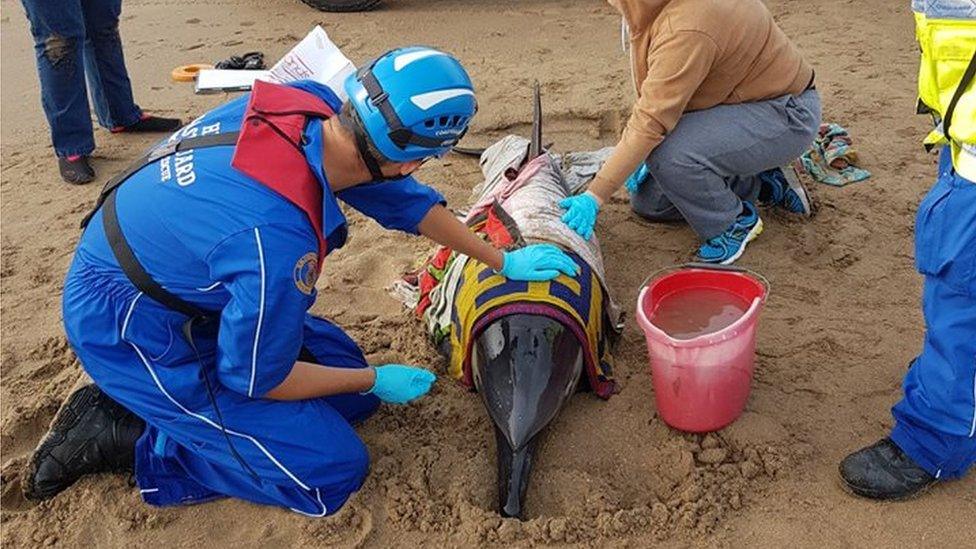
- Published10 August 2019
